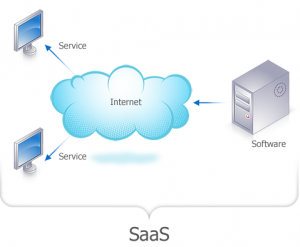Understanding SaaS Application Model
SaaS stands for Software-as-a-Service. In this model, any particular application is delivered as a service over the internet. It eliminates the need to maintain and install software. It also rids the user of hardware limitations that are there in case of conventional software. The service provider has the power to manage access and security of the application.

A SaaS application is hosted on the server of the service provider. At times, SaaS is confused with ASP model, as both are hosted. But these both models are inherently different, the SaaS model has a multi-tenancy feature while the ASP model has single instance single-tenant legacy software application. With multi-tenancy feature one means that the application has an ability to share processes and data with other applications, and single-tenant legacy software lacks this ability.
Traditional softwares sold a perpetual license and later on they sold updates. SaaS model is based on the concept of a recurring maintenance fee apart from the original license fee. This maintenance fee is typically 15-20% of the license fee. Thus the SaaS applications are sold on a service-based model, and this is where SaaS gets its name from.
The SaaS applications have a lot of advantages over traditional software applications. Just like traditional softwares, the SaaS applications also support configuration and customization. In case of SaaS applications, feature delivery is made easier and less time consuming when compared to traditional or enterprise softwares. Updates of SaaS applications can be delivered directly by provider as the software is centrally hosted. Testing in such applications is also accelerated due to its enhanced accessibility. The provider of software has the added access to user behavior and based on its analysis, updates and improvements in the software can be released, making software more and more robust. Due to the use of SaaS, sharing of information over the cloud also gets enhanced. With increasing dependency on SaaS applications, SaaS integration platforms (SIPs) are being developed for building additional SaaS applications.
